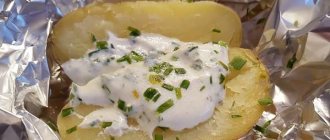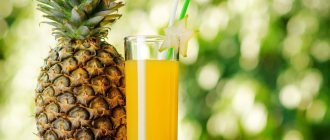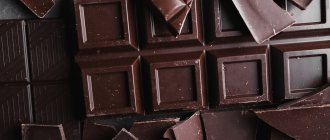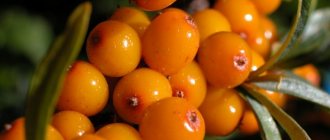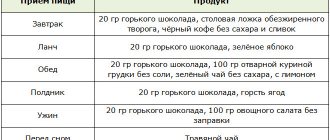What is Nutella
Sweetened chocolate spread is produced in Italy. Ferrero is the largest chocolate manufacturer in the world.
Important! The product was created by Pietro Ferrero during the Second World War. The baker added ground hazelnuts to chocolate for the first time.
We recommend reading: Hazelnuts: beneficial properties and contraindications
Nutella can be considered as a dessert or spread. The manufacturer positions it as a healthy breakfast option. However, you should take into account the significant amount of sugar that the product contains.
It is noteworthy that 25% of all nuts are used to make paste. International Dessert Day is celebrated annually on February 5th. These facts indicate the popularity of the delicacy.
Half a billion jars of Nutella are made every day in Italy.
Nutella
Nutella is a chocolate and nut spread produced since 1964. It has a delicate texture and rich, unique taste. Nutella is one of the most popular foods all over the world. It is sold in 75 countries.
Calorie content
100 grams of product contains 530 kcal.
Compound
The exact composition of Nutella is a trade secret of its manufacturer. The packaging states that the paste contains hazelnuts, skim milk powder, skim cocoa, palm oil, sugar, whey powder, lactose, soy lecithin, vanilla flavoring.
Moreover, the composition of Nutella varies depending on the country where it is sold: in Italy the sugar content is less than in France, in the USA, Canada, Mexico, Ukraine and Russia palm oil is used instead of vegetable oil, in Greece, Italy and Russia the share of milk powder is 5%, and in Australia and New Zealand - 8.7%.
Usage
Nutella is ideal for spreading on sandwiches, waffles, pancakes, toast, croissants, muffins, making cakes, pastries and a variety of desserts.
Story
The Nutella recipe was invented by Pietro Ferrero, the owner of a small bakery in the Italian town of Alba. In the post-war years, cooks were looking for ways to create cheap sweets with a small amount of cocoa, which was quite expensive.
Ferrero came up with a paste made from roasted hazelnuts, cocoa butter and milk. Initially, it was quite hard and was a dense briquette, which was cut with a knife. It was placed on slices of bread. One day Pietro Ferrero made a large batch of these cakes, but due to the heat the paste melted. Then Ferrero offered customers a new product that literally fascinated them.
From 1946 to 1951, the pasta was called Gianduja and consisted of bars wrapped in foil.
In 1951–1964 it was renamed Supercrema and began to be packaged in glass jars.
Since 1964, Nutella has received its current name and the familiar original glass jar, the design of which has never changed.
Interesting Facts
Since 2007, World Nutella Day has been celebrated on February 5th.
The slogan of the chocolate spread is translated into Russian as “What would the world be like without Nutella?”
A 400g jar of Nutella contains 52g of hazelnuts.
In 2008, in honor of the European Football Championship, Ferrero released an 850-gram jar of Nutella, painted in the colors of the Italian uniform.
In 2002, during the transition to a new currency - the euro - a 1.95583 kg jar of Nutella entered the German market, which corresponded to a fixed exchange rate of the German mark to the euro.
What's in Nutella?
The taste of the paste depends on the components included and their proportions.
Dessert contains:
We recommend reading: Beetroot: beneficial properties and contraindications
- Sugar. The source can be either beets or cane. Sugar is present in significant concentrations (57%), which reduces the beneficial properties of the product.
- Palm oil. It is this ingredient that provides creamy texture and ease of distribution.
- Hazelnut. Each jar contains approximately 50 nuts.
- Cocoa. The powder gives the paste a chocolate taste.
- Powdered milk (skimmed). Adding the product in this form extends the shelf life.
- Soy lecithin. An emulsifier helps bind ingredients together and maintain a uniform texture. The fatty substance is obtained from a dietary supplement and soybeans.
We recommend reading: What are the benefits of cocoa, its properties, how to prepare it
Nutella also contains a synthetic version of vanillin.
What vitamins are in Nutella?
Chocolate-nut butter includes healthy ingredients. Among the vitamins present in the dessert, the manufacturer names calcium and iron (4% RDI). However, their quantity is insignificant and cannot have a pronounced beneficial effect on the body.
The hazelnuts contained in the paste are known for the presence of the following valuable substances:
- retinol, which improves visual acuity;
- B vitamins necessary for the normal functioning of the nervous system;
- ascorbic acid, which strengthens the immune system;
- tocopherol, which is a powerful antioxidant;
- fiber that lowers cholesterol.
Important! The manufacturer recommends using Nutella for breakfast, as the product provides energy for the whole day.
Story
The history of Nutella is closely connected with gianduia chocolate, which was filled with almost 30% hazelnuts. He was born in Piemonte, when, after the war, prohibitive taxes on the import of cocoa beans were introduced, and therefore the distribution of regular chocolate sharply declined.
Pietro Ferrero owned a pastry shop in Alba in the Langhe region, an area famous for hazelnut production. In 1946, the first batch of Gianduja weighing about 300 kg went on sale. The product was a chocolate spread filled with nuts, in the form of small chopped bars.
In 1951, gianduja became Supercrema. Now the delicacy was sold in large jars as canned vegetables.
In 1964, Michele Ferrero decided to improve the production of pasta in order to promote it to the European market. He changed the composition, label and name of the product. It was formed from the English word nut (nut), decorated with Italian pronunciation. This is how the name Nutella was born. The logo, registered in the same year, has survived unchanged to this day.
The first jar of Nutella was released on April 20, 1964.
In 1965 she conquered Germany, in 1966 – France, and then continued her victorious march across Europe. In 1978, a factory for the production of the famous chocolate-nut butter was opened in Australia near Sydney. Today, the delicacy remains extremely popular and is often mentioned in songs and films.
In 2010, the European Parliament approved legislation requiring manufacturers of foods high in fat and sugar to include a “high calorie” warning on their labels. This measure was aimed at combating obesity. She was received with hostility by the vice-president of the Ferrero company, Paolo Fulci. He created a committee called “Hands Off Nutella” and, with the support of the Italian Minister for European Affairs, urged people not to succumb to “nutritionist fundamentalism.”
Interesting Facts
- In 1964, the lid on the jar of Nutella was painted red. It was later made white to reduce (at least slightly) production costs.
- In 1969, an attempt was made to fortify the composition of Nutella, making it suitable for baby food. A chemist at the Ferrero factory admitted that at a certain point management ordered that the paste be enriched with vitamins in order to get ahead of competitors and encourage mothers to buy. The new product never went on sale.
- The use of glass containers from the very beginning of production is one of the forms of incentive to purchase pasta . After emptying the jar, it was used for household needs. Until 1990, it was decorated with abstract images related to nature. They were then replaced by comic book photographs, which are still used in Italy today for the product in 200g containers.
- In 2007, Claudio Silvestri, chef of the Italian national football team, said that he himself eats sandwiches with Nutella for breakfast.
- In 2012, a French senator proposed increasing the tax on palm oil by 4 times. Oil is one of the main components of pasta. Therefore, the media dubbed the initiative a “Nutella tax.”
- Ferrero's firm in 2013 joined Greenpeace's campaign in favor of introducing a moratorium on deforestation in Southeast Asia for the production of palm oil. The campaign is held under the slogan “Nutella saves the forest.” To this day, Ferrero uses palm oil obtained from areas where trees have not been destroyed to plant palm trees.
Calorie content of Nutella paste per 100 grams
The nutritional value of the dessert is essential. It is recommended to consume the paste in an amount of no more than 2 tablespoons per day. The nutritional value of the product is 200 kcal (37 g). The content of BJU in the indicated portion reaches 2, 12 and 21 g, respectively.
Attention! Nutella is considered a high-calorie dessert; it is not advisable to exceed the recommended amount. You should also take into account the abundance of sugar and fats, which negatively affect the body.
Is Nutella good for you?
The beneficial effects of chocolate and nuts have been the subject of debate for a long time. The benefits of the product raise serious doubts on the part of both specialists and consumers.
The composition of Nutella nut butter is natural. The synthetic component is represented only by vanillin. This fact distinguishes Nutella from similar spreads from other manufacturers. The addition of a small amount of ingredients also has the advantage.
The dessert does not contain the following harmful substances:
- corn syrup;
- artificial colors;
- hydrogenated oils.
This is why Nutella is the most popular chocolate hazelnut spread. Despite the inclusion of hazelnuts, the product cannot replace nut butter. This is due to the amount of the specified component.
Important! Nut butter is more nutritious and healthy when compared to Nutella.
Benefits of Nutella for women
The dessert is distinguished by the presence of carbohydrates in high concentrations. Moderate consumption of Nutella maintains an adequate percentage of adipose tissue, which synthesizes estrogens. Female sex hormones are responsible for the coordinated functioning of all organs and systems.
Since the recommended amount of Nutella contains almost a day's worth of sugar, other sources of the substance should be excluded
Is Nutella safe for pregnant women and breastfeeding?
Physiological conditions are accompanied by changes in hormonal levels. During pregnancy, specific taste preferences may be noted. Many women prefer sweet foods and fruits to meat dishes.
Nutella is not a prohibited snack option during pregnancy. However, it is highly not recommended to overindulge in dessert. Increased intake of sugar and fats into the body can trigger the development of gestational diabetes mellitus.
During lactation, a woman needs to be extremely attentive to her daily diet. All foods that the mother eats pass into breast milk.
Nuts often provoke the development of allergies. Consuming Nutella spread in the first weeks of lactation may cause the development of unwanted reactions in the baby.
An allergy to chocolate-nut dessert can manifest itself in the form of skin rashes in an infant
For men
Nutella is popular not only among children. Men also prefer a delicious dessert as a snack or addition to breakfast. The product quickly saturates with energy, which is necessary in the first half of the day. However, the body, first of all, needs slow carbohydrates. They ensure the operability and normal functioning of systems.
The product is harmful if abused, which often leads to female-type obesity. Because adipose tissue synthesizes estrogens, men may develop erectile dysfunction.
Regular inclusion of Nutella in the diet increases the risk of cardiovascular disease in men
For children
The body needs sugar for brain development. Nutella contains the substance in significant quantities. For the product to be beneficial, it is strictly not recommended to consume more than 2 spoons per day.
Calcium present in Nutella components strengthens children's teeth
Is Nutella harmful?
The manufacturer presents the product as a healthy, tasty and light snack. The paste contains the following components:
- hazelnut;
- skimmed milk;
- cocoa.
However, the main ingredients that make up the majority of Nutella are fat and sugar. They contribute to weight gain and the appearance of various diseases when consuming the spread in increased quantities:
- obesity;
- diabetes;
- heart and liver diseases.
Excessive consumption of sugary foods reduces cognitive function and increases the risk of developing malignant tumors. Thus, it is advisable to minimize the consumption of Nutella spread.
The recommended amount of spread per day does not exceed 2 tablespoons. This volume is 37 g. It contains 5 teaspoons of sugar.
Attention! The recommended intake of the substance is 25 g for children and women, and 38 g for men.
Nutella contains 67% saturated fat. This artificial component can cause obesity, increased cholesterol levels, heart and vascular diseases:
- thrombosis;
- atherosclerosis;
- ischemia;
- hypertension.
A well-known paste includes palm oil, the harm of which has been proven by numerous studies. The powdered and skim milk contained in it does no harm or good.
Experts say that Nutella also contains monosodium glutamate. This is a food additive E621 that causes neurotic disorders. The component is especially dangerous for children and pregnant women. The constant intake of monosodium glutamate into the body disrupts the functioning of taste buds and provokes:
- renal failure;
- Alzheimer's disease, Parkinson's disease;
- bronchial asthma;
- hormonal imbalance;
- hyperactivity;
- violation of the structure of the retina;
- dysfunction of the digestive system.
Important! There is an opinion that the composition of Nutella chocolate spread in Russia and Italy is different. Nutritionists recommend eating dessert that you can prepare yourself.
Nutella: Composition Analysis
Authors: Olga Kosnikova, food chemist-technologist
Editor: Maxim Ivannikov, scientific editor of SMT
According to all sorts of “health experts”, Ferrero is a real stronghold of evil. Mordor of the modern world. They are the ones who make Kinder (which is supposedly - sic! - made from babies), Raffaello and Nutella. Let's talk about her.
Legend has it that Nutella was intended to be a chocolate spread. But after World War II there was a shortage of chocolate. And the same Pietro Ferrero (who did not yet know that his name would become a brand) came up with the idea of adding hazelnuts to the paste. [1] And then everything is wrapped up...
What's in it?
Sugar
The ingredients in the composition are written in descending order. That is, there is more sugar here than other ingredients. The exact proportions are usually a trade secret. The manufacturer has the right to do this. But based on the KBJU we can estimate how many carbohydrates we will get. Per 100 g – 539 kcal and 57.5 g of “coals”.
We do not demonize any product. Scold Nutella for being too sweet? With the same success I propose to scold the water for being wet and transparent. Of course, you shouldn’t overeat sweets. But sugar itself is not evil. It's a matter of the QUANTITY eaten. Don't blame sugar.
Vegetable fat
This is palm oil. And before we panic, let's be ironic.
The packaging emphasizes: “Without hydrogenated fats.” Logical. Hydrogenation is the process of turning liquid oil (such as sunflower or rapeseed) into solid oil. Unfortunately, the process produces some trans fats. Not 50% and not 100%, no matter how illiterate journalists scream. But they exist. Russian regulations limit their number to 2%. [2] If less than 2%, then OK, we live.
There is another way to make liquid fat solid. It is called for a long time – transesterification [3][4]. In this case, the appearance of trans fats is completely excluded. This is such a triumph of technology.
But the trick is that palm oil is already hard. From nature. In principle, it is not hydrogenated. Do you understand? There are no trans fats. At all. And yes, journalists who squeal about “trans fats” in palm trees need to be given a bad mark and seated at their desks.
Ferrero has never hidden the fact that Nutella consists of sugar and palm oil. Healthy lifestyle advocates and iHerb nutritionists are now choking. A scary combination, isn't it? In fact, palm oil is not dangerous, not scary, not poisonous. Fat is like fat. With its pros and cons.
It's funny that in 2012, the tax on palm oil was increased four (!) times in France. And since Nutella contains more than 50% palm trees, the media called it a “Nutella tax.” [5] I remember how in Russia we raised the VAT on palm trees from 10% to 20%. And I understand that ours have room to grow (sarcasm sign attached).
Hazelnut
This is the third ingredient. And it really is in Nutella. Content - only ~ 13%.
Why is Nutella called “nut butter” even though there aren’t that many nuts? Because our legislation does not prohibit this. Got a nut? Yes, here he is. What questions?
Skimmed milk powder
Again, bummer, it's not dangerous. Fat is removed from regular whole milk by separating the cream from the skim milk (that is, our skim milk, where the protein remains). Then the skim milk is dried in special dryers: spray or roller. Contrary to myths, nutritional properties are not lost during the drying process. [6] There is loss of some vitamins. But proteins and fats are not going anywhere. And let's be honest. We definitely don’t eat Nutella for the beneficial properties of milk!
Fat-free cocoa powder
It's not a creepy thing either. Ferrero had a couple of scandals due to the composition. In Italy, Nutella is not allowed to be called "chocolate cream". Not enough cocoa powder for this. And when the amount of milk powder and sugar in the recipe was increased in 2021, Nutella became visually lighter. And people panicked and were indignant: “Aha, that means you put in less cocoa! Oh, you are scammers! Although the percentage of cocoa was not actually changed. The color just changed.
I respect the feelings of consumers. But I can’t resist being caustic. This is the problem. The tiger in the zoo is not given any meat! And Nutella has less cocoa, guard!
Lecithins
This is a whole group of fat-like substances, a mixture of phospholipids with triglycerides. A wonderful emulsifier, also of natural origin. It was first obtained from egg yolk. There is no need to be afraid of lecithins and call them “critical ingredients”. They work like surfactants: they mix the immiscible and reconcile the irreconcilable. (Editor’s note: They are also actively sold as dietary supplements on the same iHerb. Phospholipids and that’s all. But there is no point in using them as supplements due to the complete coverage of the body’s needs with both natural and “factory” products.)
Flavor
Likewise, it is simply a mixture of odorous molecules. Flowers, fruits and asphalt smell after rain not on their own, but thanks to aromatic molecules. We learned to repeat them or create them from scratch. And don’t let them disappear ahead of time. More details here.
Not a single ingredient in Nutella is dangerous in itself, poisonous or “critical”. The problem with Nutella is its alluring sweet taste. For example, I am one of those people who can eat a can in one sitting. Therefore, knowing my love, I simply do not buy myself Nutella. Or I buy it with the full knowledge that I’m about to eat it clean. Without self-reproach and with pleasure.
The manufacturer himself advises not to exceed the daily norm - 15 grams or two teaspoons. But show me a man with a will of steel who will limit himself to two spoons! Legends say that there are people who are indifferent to the taste of Nutella. It seems to me that these are some kind of aliens, nothing less.
Sources:
- A brief history of Nutella
- Technical Regulations of the Customs Union for fat and oil products TR CU 024/2011, Appendix 1
- Transesterification as an alternative method for modifying trans-free fats
- Transesterification: myths and reality
- France's “Nutella amendment” causes big fat international row
- Powdered milk production line
How to make Nutella at home
Chocolate nut butter is a delicious treat. The composition of the Nutella product has not only benefits, but also harm. To make dessert at home, you can use a simple recipe that includes:
- hazelnuts (1 cup);
- vanilla extract (1 teaspoon);
- maple syrup and cocoa (quarter cup);
- sea salt (quarter teaspoon);
- milk (5 tablespoons).
I soak the hazelnuts overnight. After the specified time, the nuts are crushed using a blender (to a puree state). Then add the remaining ingredients and beat.
The resulting mass has the appearance of a slurry; the finished paste is placed in the refrigerator
Homemade recipe
We may be challenged by the Nutella manufacturers, but we can confidently say that homemade chocolate spread is much healthier than store-bought ones.
The recipe for Nutella at home is quite simple. The finished product will not have such a strong aroma, but its taste will make a very pleasant impression. To prepare 450 g of pasta you will need:
- Dark chocolate – 100 g;
- Milk – 100 ml;
- Butter – 80 ml;
- Hazelnuts – 80 g;
- Sugar – 100 g;
- A pinch of vanillin.
First, grind the sugar and toasted hazelnuts in a blender. It is preferable to grind the ingredients into a powder, but if you like to feel the nuts, you don't have to grind them all the way.
Melt butter and chocolate in a saucepan over low heat, add milk. After obtaining a homogeneous mass, add sugar-nut powder and mix again. Cook for 6-8 minutes, without bringing to a boil.
Pour homemade Nutella into a jar, close the lid and let cool. Unlike a store-bought product, homemade pasta must be stored in the refrigerator for no more than 2 weeks. The delicacy is consumed as an addition to cookies, bread and fruits. It is also used as a cream for cakes and pastries, as well as a filling in pancakes.
